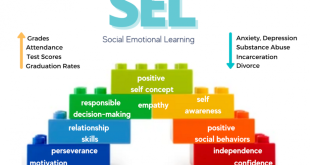In today’s diverse educational landscape, creating an inclusive classroom environment is essential for fostering a sense of belonging and ensuring that all students can thrive. Inclusion goes beyond simply accommodating students with disabilities; it encompasses recognizing and valuing the varied backgrounds, abilities, and perspectives that each student brings to the classroom. This article explores key strategies for creating an inclusive classroom environment that supports all learners.
 Understanding Inclusion in Education
Understanding Inclusion in Education
Inclusion refers to the practice of integrating all students, regardless of their abilities or backgrounds, into mainstream classrooms. This approach promotes equality and provides opportunities for every student to participate fully in the learning process. An inclusive classroom acknowledges the unique needs of each student and adapts teaching methods, materials, and assessments accordingly.
The Benefits of an Inclusive Classroom
Creating an inclusive classroom offers numerous benefits:
- Enhanced Learning Opportunities: All students benefit from diverse perspectives and collaborative learning experiences.
- Improved Social Skills: Inclusion fosters social interactions among students with varying abilities, enhancing empathy and understanding.
- Greater Academic Achievement: Research indicates that inclusive classrooms can lead to improved academic outcomes for all students, as diverse teaching methods can address different learning styles.
Strategies for Creating an Inclusive Classroom
1. Foster a Positive Classroom Culture
A positive classroom culture is the foundation of an inclusive environment. Here are some strategies to cultivate this culture:
a. Promote Respect and Empathy
Encourage students to respect one another’s differences and develop empathy. Use discussions, role-playing, and team-building activities to help students understand the value of diversity. Celebrate cultural events and encourage students to share their backgrounds and experiences.
b. Establish Clear Expectations
Set clear expectations for behavior and academic performance. Make sure students understand the importance of inclusivity and collaboration. Consistently reinforce these expectations to create a safe and supportive atmosphere.
2. Differentiate Instruction
Differentiating instruction is crucial for meeting the varied needs of students. Here’s how to implement differentiated teaching:
a. Assess Individual Needs
Begin by assessing each student’s strengths, weaknesses, and learning preferences. Use a variety of assessment methods, such as observations, quizzes, and discussions, to gather insights into each learner’s needs.
b. Tailor Teaching Methods
Adapt your teaching methods to accommodate different learning styles. For example, use visual aids, hands-on activities, and group discussions to engage visual, auditory, and kinesthetic learners. Provide options for students to demonstrate their understanding, such as presentations, projects, or written assignments.
3. Utilize Collaborative Learning
Collaborative learning encourages peer interaction and fosters a sense of community. Here are ways to implement this approach:
a. Group Work
Create diverse groups that include students with varying abilities and backgrounds. Assign roles within each group to ensure that everyone participates and contributes. Collaborative projects allow students to learn from one another and develop social skills.
b. Peer Tutoring
Implement peer tutoring programs where students can help one another. This approach not only reinforces learning but also builds relationships and promotes a sense of belonging.
4. Use Universal Design for Learning (UDL)
Universal Design for Learning (UDL) is an educational framework that aims to optimize teaching for all learners. UDL focuses on providing multiple means of engagement, representation, and action/expression.
a. Multiple Means of Engagement
Engage students by offering choices in how they learn and demonstrate their understanding. Use varied instructional strategies to maintain interest and motivation. Incorporate technology, multimedia resources, and real-world applications to make learning relevant.
b. Multiple Means of Representation
Present information in various formats to accommodate different learning styles. Use text, images, videos, and hands-on materials to provide diverse ways for students to access content. Ensure that all materials are accessible to students with disabilities.
c. Multiple Means of Action and Expression
Allow students to express their learning in different ways. Some may prefer to write essays, while others might choose to create presentations or art projects. Providing options empowers students to showcase their understanding in a manner that suits their strengths.
5. Foster Open Communication
Open communication between students, teachers, and parents is essential for creating an inclusive environment. Here’s how to promote effective communication:
a. Regular Check-Ins
Conduct regular check-ins with students to discuss their progress, challenges, and feelings about the classroom environment. This practice fosters trust and allows you to address any concerns promptly.
b. Involve Parents
Engage parents in the educational process by keeping them informed about their child’s progress and involving them in classroom activities. Encourage open lines of communication, allowing parents to share insights about their child’s needs and strengths.
6. Provide Support and Resources
To create an inclusive classroom, it’s important to provide additional support and resources for students who may need it.
a. Collaborate with Specialists
Work closely with special education teachers, counselors, and other specialists to develop individualized education plans (IEPs) for students with learning disabilities. These professionals can provide valuable insights and resources to support students’ unique needs.
b. Offer Additional Resources
Provide access to resources such as assistive technology, tutoring programs, and after-school support. Ensure that all students know where to find help and encourage them to seek assistance when needed.
 Conclusion
Conclusion
Creating an inclusive classroom environment is a vital aspect of modern education. By fostering a positive culture, differentiating instruction, utilizing collaborative learning, implementing Universal Design for Learning, fostering open communication, and providing support and resources, educators can ensure that all students feel valued and empowered to succeed.
An inclusive classroom not only benefits students with disabilities but enriches the educational experience for everyone. By embracing diversity and promoting inclusivity, educators can help all students reach their full potential, preparing them for a future that values cooperation, understanding, and mutual respect. Ultimately, an inclusive classroom is a reflection of a society that values every individual, paving the way for a brighter, more equitable future.


